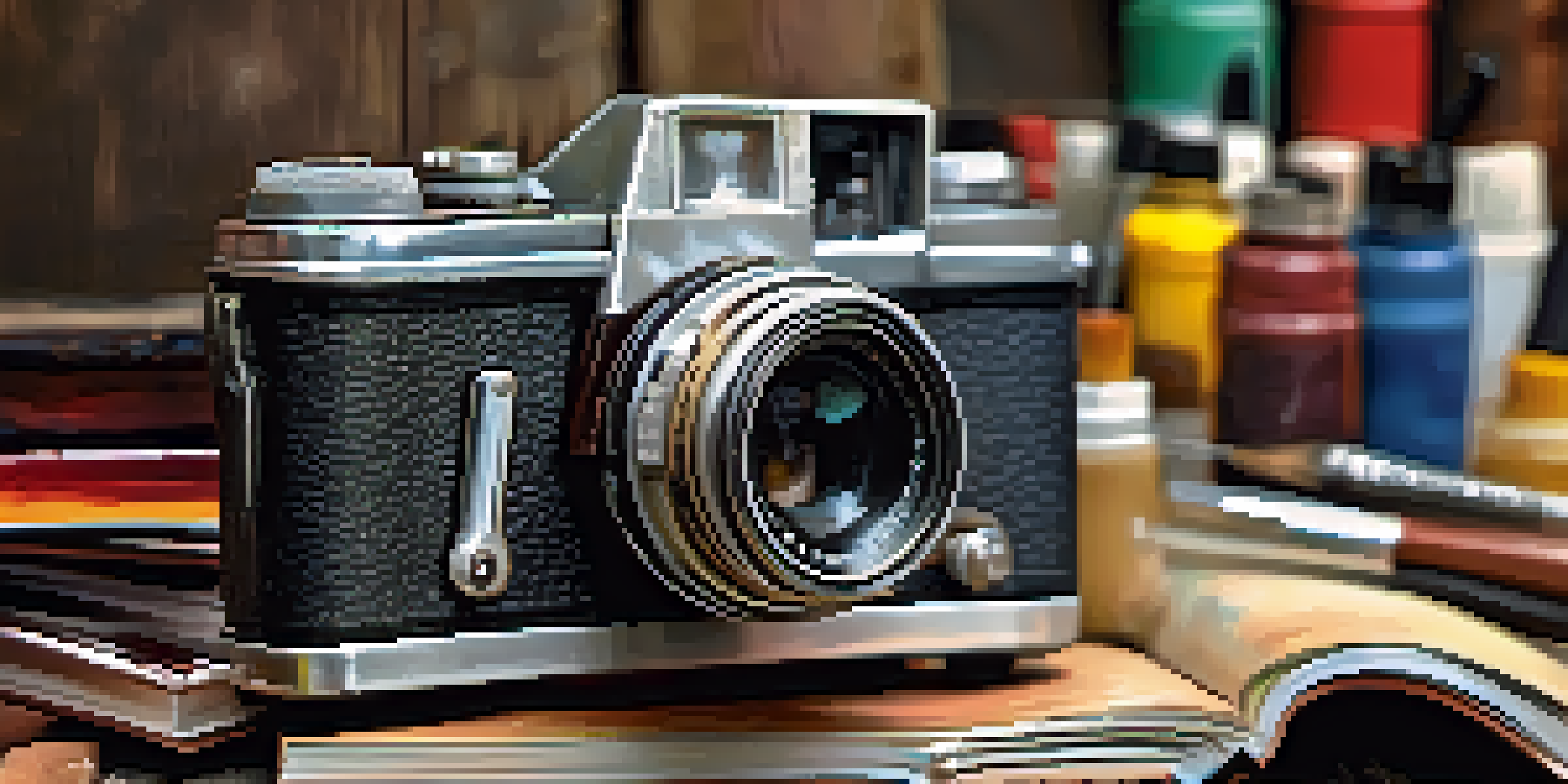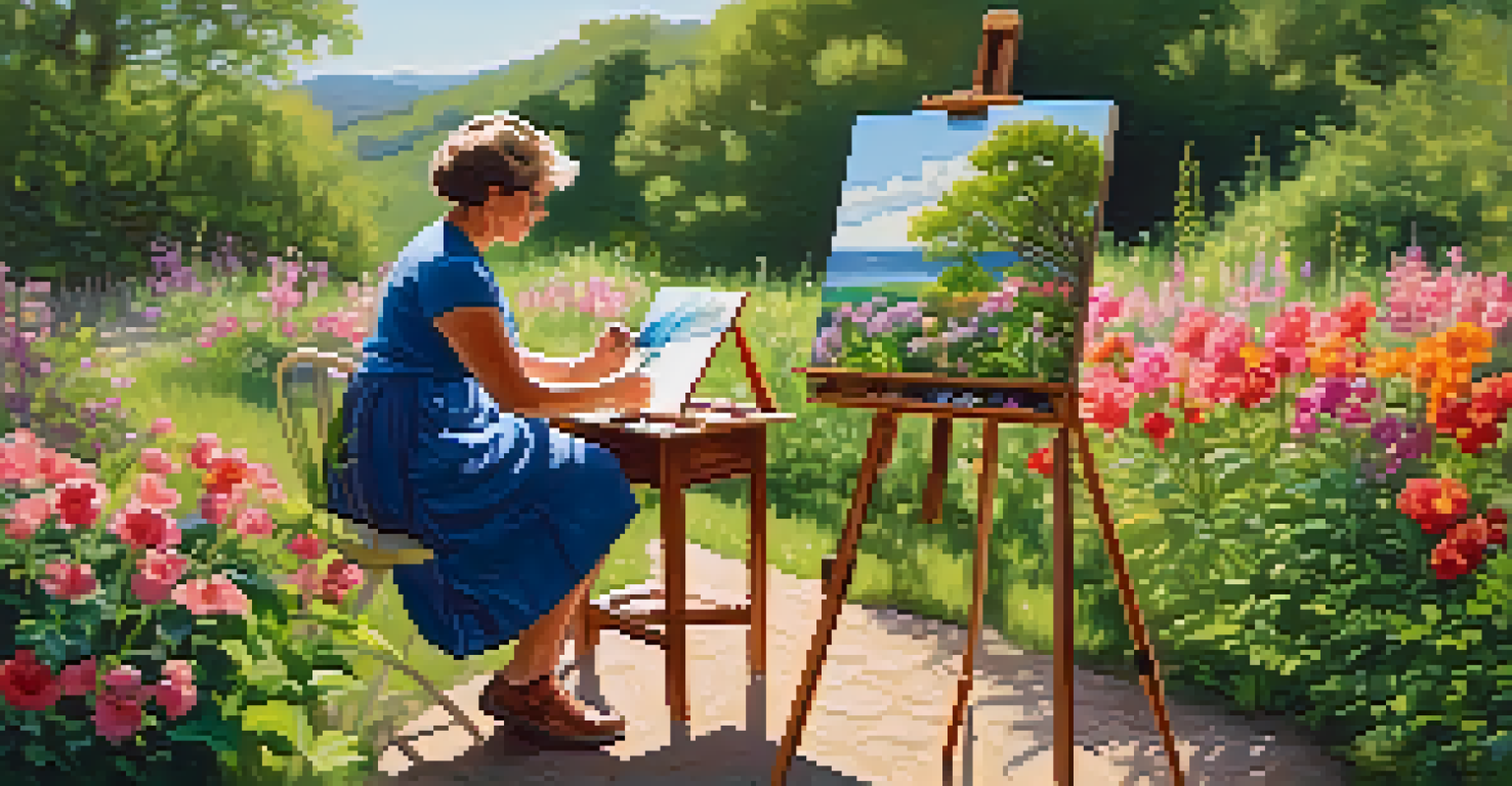The Influence of Photography on Portrait Painting Styles

Understanding the Relationship Between Photography and Art
Photography and portrait painting may seem worlds apart, but they share a deep, intertwined history. The invention of photography in the 19th century opened up new avenues for artists, changing how they approached their craft. Artists began to see photography not just as a tool, but as a way to capture realism and explore new styles.
Photography is the story I fail to put into words.
Before photography, portrait painting was often an idealized representation of subjects. However, with the advent of photography, artists could study real-life poses, expressions, and light dynamics. This shift encouraged painters to move away from rigid traditions towards more dynamic and expressive techniques.
Thus, photography began to influence the way artists perceived their role. Rather than merely replicating reality, painters could now interpret it, blending photographic aesthetics with their unique artistic vision.
The Rise of Realism in Portrait Painting
As photographers captured the world with startling accuracy, portrait painters started to embrace realism. This movement emphasized the depiction of subjects as they truly appeared, including their imperfections and individuality. Artists like Gustave Courbet began to portray everyday people, reflecting a more authentic interpretation of human experience.

This shift towards realism marked a departure from the idealized forms of earlier portraiture. Artists began to focus on the nuances of light, shadow, and texture, much like photographers did. The result was a richer, more relatable representation of subjects, allowing viewers to connect with the artwork on a personal level.
Photography's Influence on Art
The advent of photography transformed portrait painting by encouraging artists to embrace realism and explore dynamic expressions.
Furthermore, realism in portrait painting encouraged a greater exploration of emotions and personality. Painters learned to capture fleeting expressions and candid moments, echoing the spontaneity found in photography.
Impressionism: A Blend of Light and Photography
The Impressionist movement emerged as a direct response to the clarity of photography. Artists like Claude Monet and Pierre-Auguste Renoir focused on capturing light and atmosphere rather than minute details. They often painted en plein air, or outdoors, to convey the changing effects of light and color, similar to a photographic snapshot.
An artist is not a special kind of person; every person is a special kind of artist.
Photography influenced Impressionists not only in technique but also in subject matter. The spontaneity of candid photography inspired artists to capture moments of everyday life. This shift opened up new possibilities for composition, encouraging the exploration of movement and emotion.
This blending of photography and painting led to a new appreciation for the transient and ephemeral. Impressionist portraiture captured the essence of a moment, much like a photograph, yet retained the emotional depth unique to painting.
The Role of Color Theory in Modern Portrait Painting
With the influence of photography, artists began to experiment with color in ways previously unexplored. The ability to analyze photographs led to a better understanding of color theory and how it affects perception. Artists like Vincent van Gogh utilized bold color contrasts to evoke emotion and create dynamic compositions in their portraits.
This exploration of color was also influenced by the limitations of early photography, which often struggled with capturing accurate hues. As a result, painters felt empowered to take creative liberties with color, enhancing the emotional impact of their work. The vibrancy seen in modern portraiture can largely be attributed to this newfound freedom.
Digital Age Shapes Portraiture
Modern digital photography blends traditional painting techniques with innovative styles, expanding the creative possibilities for artists.
Moreover, the interplay of color and light in photography inspired painters to rethink their palettes. They started to adopt techniques like color layering and glazing to create depth, resulting in portraits that were not just realistic but also strikingly expressive.
The Impact of Digital Photography on Contemporary Portraits
In today's digital age, photography continues to shape portrait painting, particularly through digital manipulation and high-resolution imagery. Artists now have access to endless resources, allowing them to blend traditional painting techniques with modern photographic elements. This fusion has led to innovative styles that challenge conventional boundaries.
Digital photography also allows artists to capture and reference a wider array of subjects and settings. The immediacy of digital tools lets painters experiment with composition and perspective before committing to canvas. This ability to iterate quickly can lead to more refined and compelling final pieces.
As a result, contemporary portrait painting often showcases a dynamic interplay between reality and imagination. The influence of photography has expanded the possibilities for artists, enabling them to push creative boundaries and explore new narratives.
The Evolution of Portraiture in the Age of Social Media
With platforms like Instagram, the relationship between photography and portrait painting has become even more complex. Artists have started to draw inspiration from the aesthetics of social media, where images are curated and filtered to create idealized versions of reality. This phenomenon has led to a new genre of portrait painting that reflects contemporary culture.
Social media allows for rapid sharing and feedback, influencing the direction of portraiture in real time. Artists can gauge public reactions and adapt their work accordingly, creating a more interactive dialogue between creator and audience. This connection has made portrait painting more accessible and relevant to modern viewers.
Social Media Redefines Portraits
The rise of social media has led to new genres of portrait painting that reflect curated realities and engage with contemporary culture.
Moreover, the rise of influencer culture has changed the way subjects are represented. Artists are now tasked with capturing not only likeness but also the essence of their subjects' online personas, blending traditional techniques with contemporary themes.
The Future of Portrait Painting and Photography
As technology continues to evolve, the relationship between photography and portrait painting will undoubtedly grow even more intricate. With advancements in virtual reality and augmented reality, artists have new tools to explore and create immersive experiences. These technologies could redefine how we perceive and interact with portraiture.
Moreover, the continued blending of disciplines may lead to the emergence of entirely new artistic styles. As painters incorporate elements of photography, digital media, and even 3D modeling, the lines between these art forms will blur, creating innovative expressions of identity and emotion.

Ultimately, the future of portrait painting will likely reflect the complexities of our modern world. Just as photography has reshaped portraiture in the past, ongoing technological advancements will continue to influence how artists interpret and represent human experience.